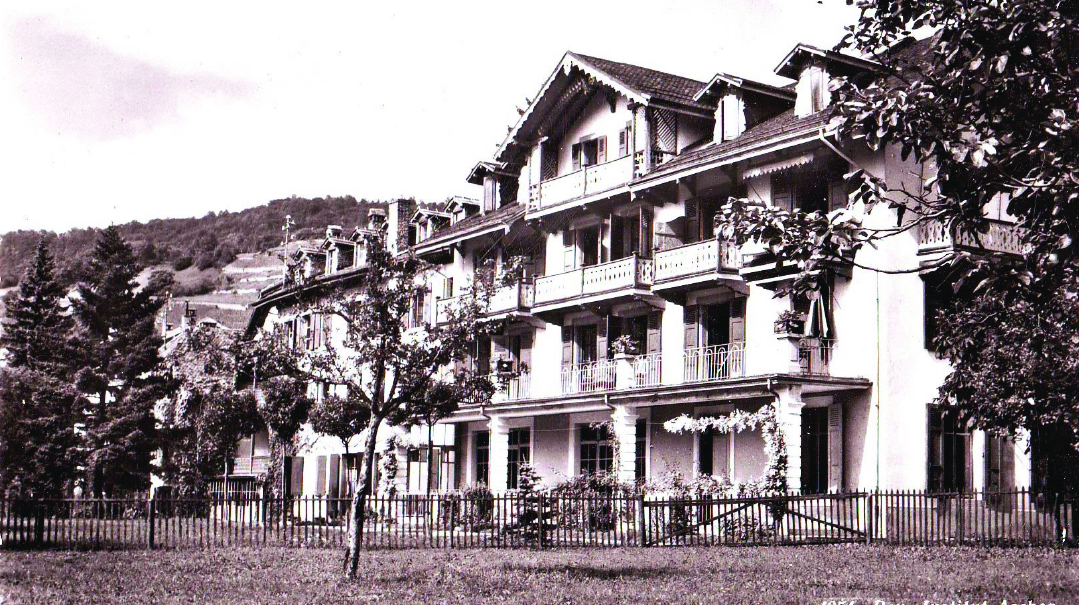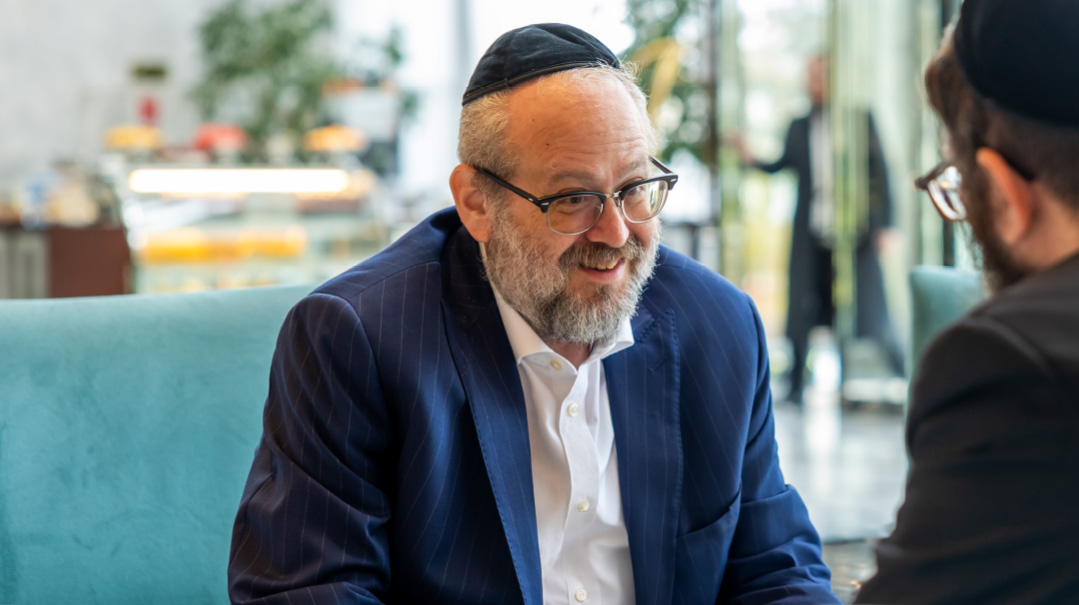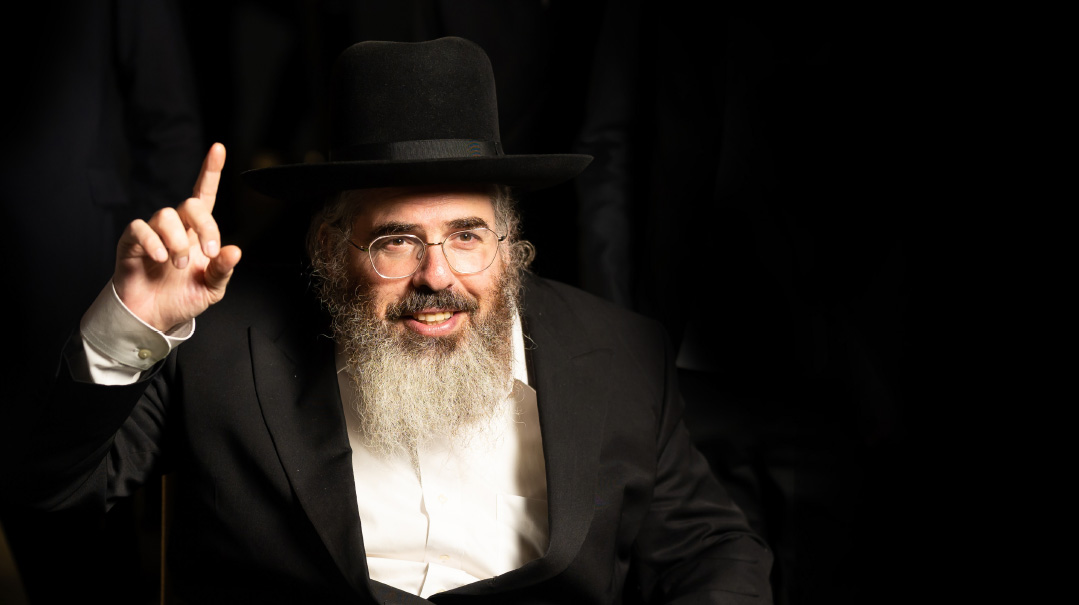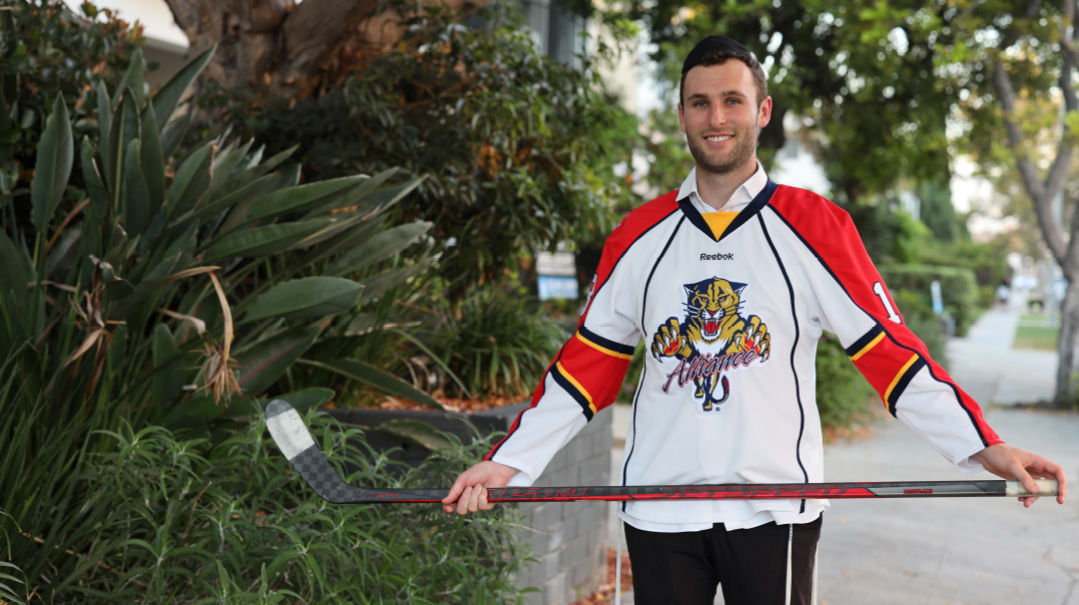Swiss Dreams
| February 17, 2021For over half a century, Institut Ascher in the Swiss town of Bex-les-Bains was the first Orthodox stop for hundreds of children

For many decades, the quiet town of Bex-les-Bains was more than just a pastoral Swiss village: This little town was actually a pulsating center of Jewish education. From 1905 to 1978, hundreds of families sent their children to the Ascher Institute (“Institut Ascher”) in Bex-les-Bains, confident that it would give them a good start in life. They came from Iran and Hungary, Los Angeles and Bolivia, some to benefit from the fresh, healthy air, others for the sake of the Jewish education unavailable in their hometowns. For many children, it was their first exposure to Orthodox Judaism in practice. But was it really possible to cater to such a varied clientele, and for children to thrive far from their parents and homes in this now-vanished educational world? Under the skilled hands of the Swiss-bred Ascher family, the answer was, amazingly, yes.
Mr. Tommy Moskovics, banker and communal leader in the kehillah of Vienna,, who spent seven years there in the 1950s, remembers Institut Ascher — which at the time housed 120 children of roughly 50 nationalities — as a kind of United Nations: There was a boy from Alexandria, Egypt, two or three children from Istanbul, a girl from Cochabamba, Bolivia, and Iraqi brothers who came via Italy. There were Iranians, Israeli Sephardi children, British and American children, some children of Polish and Hungarian war survivors, and a few local Swiss children as well.
During the post-war decade when the world was in tatters, this Orthodox boarding school provided an island of stability — an option for parents who needed to rebuild their lives and livelihoods. Switzerland had remained neutral, but the rest of Europe was war-scarred to its foundations, its Jewish communities decimated. Having lost their extended families and the entire basis of their economic and community standing, survivor parents didn’t always have the resources to raise and educate their children, or had no suitable educational facilities in the places they found themselves. Mr. Moskovics arrived in Bex (pronounced Bey) in 1952 from Austria when he was six, and stayed there until 1959.
“I was born in the aftermath of the war, and some of the other children were born at the war’s end,” says Mr. Moskovics. “Our parents needed to find themselves in the world, and if they could find the money for our schooling at Ascher’s, that was a good thing.”
Ingathering
The school wasn’t a collection center for refugees. Fees were high, and most of the families had means — some were exceptionally wealthy. For example, one of Tommy Moskovics’s roommates, Jacob Safra, was a grandson and namesake of the founder of the Safra financial empire and a nephew of Edmond Safra.
“Jacqui’s parents lived in Milan at that time, then moved to Geneva,” Mr. Moskovics remembers. “They spoke French, as they were Lebanese, and his father, who used to bring me presents when he came to visit his son, always carried a tiny Sefer Tehillim in the side pocket of his jacket. I have been in touch with Jacqui from time to time — there’s still a certain kinship from our time at Ascher’s.”
While the children lived in the French-speaking canton of Switzerland, theirs was an international environment, representing an array of cultures. Two brothers from the USA brought their mitts along and taught baseball to the Europeans. There was a young descendant of the Ben Ish Chai who grew up to become a nuclear scientist, a Jewish boy from Munich who later played on the German youth soccer team, and the current Munkacser Rebbe’s sister (their father, Rebbe Baruch Rabinowitz, was chief rabbi of Sao Paolo, Brazil, at the time).
There was, of course, some homesickness in the school at Bex, and a few heartrending stories as well. One Italian Jewish lady, widowed at age 28, arrived at the Institut with four little daughters, whom she left in the Aschers’ care. Later, once remarried and settled, she sent for their return.
“Maybe I cried the first couple of times that my mother visited, but Aschers’ became my second home,” Mr. Ezra Berkowitz, who came to the Institut just before his sixth birthday and remained for seven years, relates. “By age eight or nine I had forgotten the Hungarian of my infancy and spoke mostly French.”
Both Mr. Berkowitz and Mr. Moskovics celebrated their bar mitzvahs in Bex, with their families coming for Shabbos. As they were among the more religious students, they both leined and said a pshetl — taught by Shimon Ascher, son of the larger-than-life founder, Dr. Maurice Ascher, who by that time had moved to Eretz Yisrael.
Yet the broad-minded philosophy of Institut Ascher, based on the breadth of the personality of its founder, Dr. Maurice (Yechiel Michel) Ascher, endured. Maurice was a fascinating character, Swiss-born and German educated. He attended the Hirsch Realschule in Frankfurt, and later graduated from the universities of Bern and Hamburg. He initially studied medicine, but after two semesters switched to philosophy, in which he wrote his doctoral thesis. This was followed by some time learning at the Rabbinical Institute of Hamburg. Ascher was a prolific author whose works included science-fiction (Gulliver’s New Journey) and many educational-philosophical works from an Orthodox Jewish perspective.
Maurice Ascher’s first foray into education was when he worked as the private tutor of the sons of one of Prussian Germany’s foremost aristocrats, the Duke of Saxe-Coburg-Gotha (a relation of the British royal family). He married Rifka, one of 14 children of Avraham Erlanger of Lucerne. The Institut Ascher, which he originally founded in 1905 in the Swiss city of Neuchatel but moved to the village of Bex-les-Bains in 1928, was a Jewish boarding school that put his educational ideals into practice.
Boarding schools were fashionable for well-heeled parents at that time, and due to the scarcity of Jewish boarding options, Ascher’s attracted students from Europe, America, and far beyond. Some used the Institute as a “finishing school,” sending their daughters in their upper teens to acquire some French and some polish. Other families who had limited educational options in their locales, or who were traveling for their careers, sent children as young as five or six to board at Institut Ascher. Because travel abroad was costly and time-consuming, the Institut remained open 365 days a year, and the children spent Shabbos and Yom Tov in the school, some of them absorbing their first impressions of Yiddishkeit there.
In 1939, Dr. Ascher and his wife made aliyah, settling in Bnei Brak, where Maurice spent his time learning, writing, and enjoying being in the presence of the Chazon Ish and other gedolim of the era.
The Institute, meanwhile, was left in the capable hands of 33-year-old Shimon, who, like his father, was strictly Orthodox, broad-minded, and a pedagogue. He had learned in the Telshe yeshivah for five years after university. Shimon’s wife, Madame Ruth Ascher, directed the domestic side of the school, and Ruth’s mother, Frau Kallner, who lived until 100, came from Berlin to assist as well.
The Institut remained open until the 1970s, run by Shimon Ascher, together with his son Ouri. By then, though, it was drawing a primarily secular clientele until it dwindled due to lack of demand, as Jewish schools sprung up in new locations and boarding schools were no longer in vogue. But the Institute’s heyday, by all accounts, was post war, during the 1950’s, when up to 120 children lived and learned there, often remaining for several years.
Lessons Learned
For Mr. Feivel Wolgelernter of Zurich — son of Chaim Yitzchok Wolgelernter, murdered in 1944 and the narrator of The Unfinished Diary — Ascher’s offered a new beginning after a harrowing start in life.
“When World War II was over, I was hospitalized for over a year due to tuberculosis. Then I was placed in another children’s home, which was nowhere near as good as Ascher’s. My mother was a widow, and had little money. Once she remarried, my stepfather was able to pay for me to attend Ascher’s. It was a happy time for me.”
Outdoor learning and hands-on enrichment were part of the education, especially as Bex was isolated in terms of Jewish amenities, so the Institut had to be self-sufficient. “Onkel Simon shechted all the chickens we ate, and I remember that he took some of us boys along to watch the shechitah,” says Mr. Wolgelernter. A small herd of cows was kept on the grounds to supply milk, and Simon traveled periodically to the Lausanne region to supervise kosher wine-making, maintaining a wine-cellar on site. The Ascher family also had their own mikveh, which was sometimes used by visitors or families who lived in Montreux. As Bex was off the beaten track, the frequent lack of a minyan meant that boys as young as 11 or 12 were coached in how to lead the tefillos and lein.
The Institut was not built in a dormitory-style, but occupied a pleasant, comfortable Swiss chalet, previously a hotel, with spacious double bedrooms, elegant living and dining quarters, exceptional sports facilities, and large grounds. Simon Ascher was ahead of his time in hiring fascinating documentaries for the children’s educational viewing. Yet however wholesome the atmosphere, children needed boundaries and discipline.
“I remember at one point the Aschers felt that the young ladies were too casual about their appearance and weren’t as well-dressed as was appropriate,” says Mr. Wolgelernter. “They solved the issue by hanging full mirrors alongside the staircase. After a few days, things improved.”
But discipline can only run so far with dozens of active young boys. Mr. Wolgelernter remembers that one summer, he and some friends climbed up and feasted on the abundant cherry harvest at the top of the trees. “Mr. Ascher heard about this and called us to his office. Our punishment was to write out the Aseres Hadibros ten times. Okay, I did it. A few months later, the nuts ripened, so we climbed those trees to gather the nuts. The nuts had a soft, moist, green outer layer, then the shell, which you had to remove to get to the nut. They were delicious, but the problem was that they stained our fingers a dark brown color.” When Mr. Ascher made his inquiries about the emptied branches, no-one owned up, but checking the boys’ hands revealed who the culprits were.
“We were in his office again, and he said, ‘You will have to write the Aseres Hadibros ten times.’ I said ‘I still have the papers from last time.’ His response was ‘So write the ones from Parshas Va’eschanan,’ which is how I learned all the differences between the two versions.”
Still, there was actually little formal Jewish education. Some of the children, while their homes traditionally identified as Jewish, came to Ascher’s knowing next to nothing of Yiddishkeit. The education in how an Orthodox Jew conducts his life was mostly absorbed from the actions of the staff and older children, and from the way in which Shabbos and Yom Tov were celebrated.
“It definitely gave me my first close-up look at real Orthodox Jewry,” says Mr. Wolgelernter. “My mother was widowed by the war, we were poor, and there was no Yiddishkeit in the children’s hospital. I would say that my years at Ascher’s taught me how to live a Jewish life.”
Every child learned how to daven, and Mr. Ascher would give general Chumash-Rashi classes replete with stories to all the children, but other than that, limudei kodesh was taught individually, according to the student’s level and the wishes of their family. Mr. Berkowitz, for example, had tutors for Chumash, Mishnayos, Ivrit, and later, Gemara.
“I remember a Lubavitcher chassid, Reb Yosef Kievman, who taught me Gemara and some chassidus,” says Mr. Moskovics. “When I was nine, he gave me a sefer, the Maamarim of the Rebbe Rayatz, which I still own. Another rebbi was Reb Shloime Goldschmidt, the father of Rabbi Pinchas Goldschmidt, chief rabbi of Russia. My parents had requested these lessons, so that when I arrived at the yeshivah in Montreux which was then headed by Rav Yitzchak Scheiner of Kaminetz, I was ready for it.”
Although the kodesh studies were generally limited, they were effective. “The time I spent at Ascher’s was very important to the development of my Yiddishkeit,” says another student from the 1950’s. “The curriculum was mainly secular, but every day there was some Chumash, and Mr. Ascher’s drashos were very impressive. They helped us grow as Yidden.”
This student’s family heard of Ascher’s when they were living in the French part of Switzerland and needed a frum place to spend the Yamim Tovim. “My parents went to stay at Institut Ascher for Pesach, and soon decided to take my brother and me out of our non-Jewish school in Lausanne and place us in Ascher’s. We stayed two-and-a-half years.
“It still amazes me how Mr. Ascher could explain ideas and stories from the parshah at a level on which every child could gain something. Years later, I met Mr. Ascher on a train and he told me that he had always hesitated to push the limmudei kodesh, for fear that if he was too strict, the children would have bad memories of Yiddishkeit and would want to leave it. But when he saw the effect the kodesh had on me and my brother, that changed his mind.”
With parents’ lifestyles and aspirations for their children so varied, it took a man as broad-minded as Simon Ascher to cater to each one’s ideals. “When I was 12 and a half, Mr. Ascher, aware of the fact that my father was a Poilishe chassidishe Yid, told my mother ‘If you want him to grow up the way his father would have wanted, you should take him out and put him in a more Jewish environment,’” says Mr. Wolgelernter. “And so, I moved on to Eitz Chaim in Toronto and then to mesivta.”
Kosher Melting Pot
For Mr. Simon Ascher, the day began around 4:30 a.m., when he rose, either to learn or to take care of the grounds and grass. At 6:30, he rang a bell to wake the boys. Each weekday, no matter the weather, they had to run across the grass to the smaller building that housed the showers. After showers and dressing came Shacharis. Breakfast was next: bread, butter, and jam with milk and cocoa, and for the over-bar-mitvahs, coffee. The girls, who slept on the first floor, which boys were never allowed to enter, had the luxury of sleeping until 7:00 a.m. and would shower while the boys davened.
There was a shul for Shabbos davening, and a smaller beis medrash for the boys’ weekday davening. Shabbos davening was a communal affair in the shul, followed by breakfast, some free time for learning or walks, and then a talk by Mr. Ascher to all the children about the weekly parshah. Relatives and guests who were in town would also come to the Institut for Shabbos or Yom Tov.
Among visiting rabbanim, Rav Yechiel Yaakov Weinberg, author of the Seridei Aish, sometimes came to Bex for a few days’ rest. Mr. Harry Goodman, an Agudah activist from London who was a brother-in-law of Maurice Ascher, often spent Yom Tov in Bex; in 1965, the Satmar Rebbe, Rav Yoel Teitelbaum, was staying in nearby Gryon and came to Bex each day to use the mikveh. Sometimes there were even weddings in the Institut’s dining room, with the school children singing in a choir.
There was a big succah and an elaborate Pesach Seder, but according to Mr. Berkowitz, for the children at least, nothing beat Chanukah. “Every year on the first night, a big house made of chocolate and marzipan arrived, with small marzipan animals around it. It was to be kept for the last night, and no child ever touched it until then! On the last night, every child could choose what he wanted from the display, the youngest going first. I remember that I was one of the youngest, and for eight days I had my eye on a green marzipan crocodile. When I finally got it, it wasn’t even that good…”
Bex is located in a most beautiful area of Switzerland, and the summer months saw dozens of additional children come to stay at Institut Ascher for sports and outdoor activities. Mr. Eli Levin, son of the frum Arosa hotelier, was among the children who spent a few summer weeks at the Ascher’s. He recalls a special young man from Eretz Yisrael summering there too.
“Rav Avigdor Nebenzahl, the venerated rav of the Old City who was a son of Israel’s State Comptroller, was a very skinny child,” Mr. Levin remembers. “So when he was around 18, his parents sent him to Switzerland for the summer to boost his health. It was arranged that he would learn with Rav Tzvi Lifshitz, who was the private rebbi of Simon Ascher’s own son. My father had also asked Rav Lifshitz to learn with me, so he called me in on the first morning after breakfast. I could see the other kids going on a trip, which I didn’t want to miss. ‘Well, you can do both,’ Rav Lifshitz said. ‘Which Gemara have you learned?’
“I explained that I had a rebbi but had not yet begun Gemara. ‘So you’ll start today!’ he said emphatically. Then and there, before the outing, Rav Lifshitz taught me the first half-amud of ‘Hameniach’ and told me to know it by heart when I returned from the trip. Fortunately, on the outing, Avigdor Nebentzahl came over and asked me what I had learned. I told him, and he chazzered the entire thing with me, by heart. It made such an impression on me. After three or four weeks, I knew a few blatt by heart. I called my father and asked if I could stay. (I couldn’t. The fees were very high, around 38 Francs per day.)
Mr. Ascher had introduced Avigdor Nebentzahl to the children by telling them that a bochur “who knew the whole Tanach by heart” was coming to join them. Indeed, says Mr. Levin, “After Minchah on Shabbos, I would open a volume of Tanach at random and read him a single pasuk, and he would tell me precisely where it was from.”
The children who lived in Institut Ascher might not have all been on the same page when they arrived, but one thing they all gained was an appreciation of the diversity within the Jewish world. “I got to know and appreciate a boy from Tehran whose father was a close associate of the Shah, the children of the chief rabbi of Istanbul, a few heimishe Europeans with whom I still keep up,” says Mr. Moskovics. “It was a real melting pot that, looking back, I can say enriched my life with an appreciation for Jewish diversity.”
ONE LITTLE FAVOR
While Institut Ascher was located in a quiet hamlet in neutral Switzerland during the war and stayed out of the crossfire, there was one unforgettable Shabbos where they did their small part in a rescue operation.
Three bochurim had fled Nazi-occupied France and made their way to Montreux, Switzerland, arriving at its train station on Shabbos. Scarcely believing their freedom, they hailed the first taxi they saw to take them to the yeshivah, arriving before Shacharis on the bar mitzvah day of rescue activist Recha Sternbuch’s only son. They had barely been welcomed, told their tale, and davened, before armed Swiss police entered the yeshivah, having been informed of the arrival of three bedraggled refugees on the train. Despite attempts of community members to claim them as nephews, the police waited half an hour for the boys to eat something and then arrested them. They were taken to a town on the Swiss-French border, ready to be deported.
Meanwhile, in Montreux, the Sternbuchs raced home from their son’s bar mitzvah and got on the phone to try and determine the whereabouts and the fate of the three French bochurim. Unhelpful this time, the police gave them the false information that the boys were in Lausanne police station.
Eli Sternbuch, Recha’s brother-in-law, then recalled another military contact he could try. As a successful manufacturer, he was able to secure a good job for a distraught young gentile woman he’d met in the course of a business venture. She was extremely grateful, and kept in touch, letting him know that her fianc? was a senior Swiss officer. Now, Eli needed to call in a favor from that officer, but as it was war-time, even his fianc? had no idea where he was stationed. Then Eli remembered that the Ascher family in Bex owned a building adjacent to the Institut that they rented to the military.
When the phone rang in the Institut Ascher on Shabbos, no one answered, of course. But when Eli dialed again and again, Moshe Ascher, Simon’s brother who had also been involved in war rescue, realized this was a wartime emergency. Informed that it was likely that three bochurim would be deported back into Gestapo hands, he agreed to steal into the military building and look for a ledger of postings —at risk of being arrested for espionage if he was caught. During the soldiers’ lunch break, he made his way into the offices, and soon called Eli Sternbuch back with the location and phone number of the officer he needed.
The officer was in Martigny, on the Swiss-French border, and yes, he’d heard of Eli’s assistance to his fianc?e. When Eli asked if the officer could find out where three Jewish refugees who had been arrested that morning in Montreux were located, the officer replied that they were right there in Martigny, and he himself had received orders to deport them. In recognition of his fianc?e’s debt of gratitude, he agreed to release them to the care of their “relatives” in Montreux.
(Originally featured in Mishpacha, Issue 849)
Oops! We could not locate your form.






